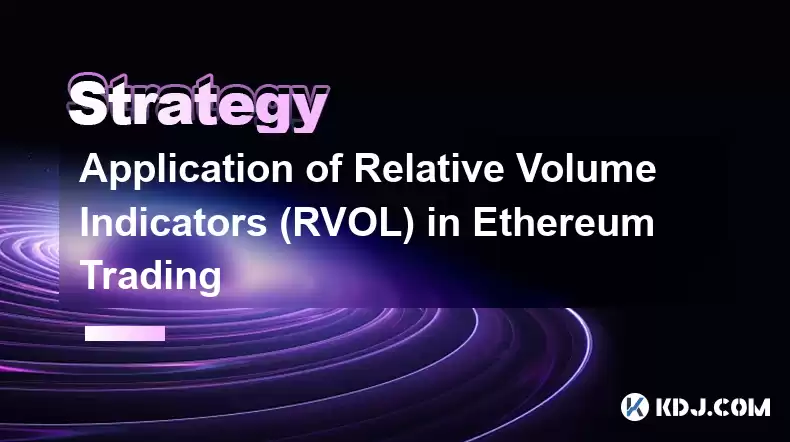-
 Bitcoin
Bitcoin $119300
2.40% -
 Ethereum
Ethereum $4254
-0.20% -
 XRP
XRP $3.184
-1.38% -
 Tether USDt
Tether USDt $1.000
0.00% -
 BNB
BNB $803.9
0.58% -
 Solana
Solana $183.1
1.50% -
 USDC
USDC $0.0000
0.01% -
 Dogecoin
Dogecoin $0.2339
-2.87% -
 TRON
TRON $0.3384
0.88% -
 Cardano
Cardano $0.8018
-0.29% -
 Hyperliquid
Hyperliquid $45.13
3.14% -
 Chainlink
Chainlink $22.10
0.96% -
 Stellar
Stellar $0.4439
-0.94% -
 Sui
Sui $3.875
-0.73% -
 Bitcoin Cash
Bitcoin Cash $570.7
0.24% -
 Hedera
Hedera $0.2589
-2.90% -
 Ethena USDe
Ethena USDe $1.001
-0.01% -
 Avalanche
Avalanche $23.83
-1.73% -
 Litecoin
Litecoin $123.8
2.61% -
 Toncoin
Toncoin $3.351
-1.13% -
 UNUS SED LEO
UNUS SED LEO $9.103
1.13% -
 Shiba Inu
Shiba Inu $0.00001356
-1.40% -
 Uniswap
Uniswap $10.93
-0.19% -
 Polkadot
Polkadot $4.057
-1.97% -
 Dai
Dai $1.000
0.01% -
 Cronos
Cronos $0.1646
4.66% -
 Ethena
Ethena $0.7974
8.11% -
 Pepe
Pepe $0.00001208
-2.89% -
 Bitget Token
Bitget Token $4.445
-1.70% -
 Monero
Monero $268.8
-2.00%
Application of Relative Volume Indicators (RVOL) in Ethereum Trading
Relative Volume Indicators (RVOL), a valuable Ethereum trading tool, measure volume relative to historical averages, providing insights into market sentiment and trend strength.
Feb 25, 2025 at 09:48 am

Key Points
- Introduction to Relative Volume Indicators (RVOL)
- Calculating RVOL
- Using RVOL to Identify Trading Trends
- Integrating RVOL with Other Indicators
- Limitations and Considerations When Using RVOL
Article Body
Introduction to Relative Volume Indicators (RVOL)
Relative Volume Indicators (RVOL) are technical analysis tools used to measure the relative volume of a particular trading period compared to the average volume over a specified period. They provide insights into the strength of a trend by comparing the current trading volume to historical averages. RVOL is especially valuable in Ethereum trading, as it can help traders gauge the market sentiment and potential for further price movements.
Calculating RVOL
RVOL is calculated by dividing the current volume by the average volume over a lookback period. The lookback period is typically set to 14 (2 weeks), 28 (4 weeks), or 50 days, although it can be adjusted based on the trader's preference and the desired trading horizon. The result is a ratio that represents the relative volume of the current period compared to the average.
Using RVOL to Identify Trading Trends
RVOL can provide valuable insights into the strength and direction of a trend. When RVOL is consistently above 1, it indicates that the current trading volume is significantly higher than the average volume. This suggests that buyers are in control of the market, driving prices higher. Conversely, when RVOL falls below 1, it indicates that the selling pressure is outweighing the buying pressure, potentially signaling a trend reversal or market correction.
Integrating RVOL with Other Indicators
RVOL can be used in conjunction with other technical indicators to enhance trading signals. Common indicators to combine with RVOL include moving averages, Bollinger Bands, and momentum indicators. By using a combination of indicators, traders can gain a more comprehensive view of the market and make better-informed trading decisions.
Limitations and Considerations When Using RVOL
- Noise: RVOL can be sensitive to short-term fluctuations in volume, which may create noise in the data. It's important to consider the overall trend rather than overreacting to single-day changes.
- Lagging Indicator: RVOL is a lagging indicator, meaning it reacts to past changes in volume rather than predicting future prices. Traders should be aware of this limitation and use RVOL in combination with other leading indicators.
- Subjectivity: The selection of the lookback period and thresholds for interpreting RVOL values can be subjective. Traders should experiment with different settings to optimize RVOL for their specific trading style and market conditions.
Frequently Asked Questions (FAQs)
Q: What is a high RVOL value?
A: RVOL values consistently above 1 indicate strong buying pressure and potential upward momentum.
Q: What is a low RVOL value?
A: RVOL values consistently below 1 indicate strong selling pressure and potential downward momentum.
Q: Can RVOL be used to identify divergences?
A: Yes, divergences between RVOL and price action can provide valuable trading signals. For example, if RVOL makes a higher high while the price makes a lower high, it suggests that the trend may be weakening.
Q: How can I optimize RVOL for my trading style?
A: Experiment with different lookback periods and RVOL thresholds to find settings that align with your trading strategy and market conditions.
Q: What are the limitations of RVOL?
A: RVOL is a lagging indicator and can be subject to noise and subjectivity in its interpretation. It should be used in conjunction with other indicators for a more comprehensive analysis.
Disclaimer:info@kdj.com
The information provided is not trading advice. kdj.com does not assume any responsibility for any investments made based on the information provided in this article. Cryptocurrencies are highly volatile and it is highly recommended that you invest with caution after thorough research!
If you believe that the content used on this website infringes your copyright, please contact us immediately (info@kdj.com) and we will delete it promptly.
- KiwiSavers, Crypto Returns, and Digital Investment: Are Kiwis Missing Out?
- 2025-08-11 06:30:11
- Ruvi AI's Sales Surge: Could It Outpace Tron in the Crypto Race?
- 2025-08-11 06:30:11
- Meme Coin Mania: Is Shiba Inu Out and Little Pepe In?
- 2025-08-11 06:50:12
- Bitcoin Casino Weekly Challenge: Hitting the Jackpot in Crypto Gaming
- 2025-08-11 06:50:12
- Cardano (ADA): Riding the Bull Cycle Wave to New Heights?
- 2025-08-11 07:10:12
- Bitcoin Institutional Holdings in 2025: A Bullish Outlook
- 2025-08-11 07:15:19
Related knowledge

How to use stop-loss orders to limit potential losses?
Aug 08,2025 at 02:01pm
Understanding Stop-Loss Orders in Cryptocurrency TradingA stop-loss order is a risk management tool used by traders to automatically sell a cryptocurr...

What are the most promising altcoins to invest in?
Aug 10,2025 at 11:42am
Understanding the Role of Private Keys in Cryptocurrency WalletsIn the world of cryptocurrency, private keys are the cornerstone of ownership and cont...

How to read cryptocurrency charts and use technical analysis?
Aug 08,2025 at 11:08am
Understanding the Basics of Cryptocurrency ChartsCryptocurrency charts are graphical representations of price movements over time. These charts are es...

What is the difference between long-term holding (HODLing) and short-term trading?
Aug 10,2025 at 05:30pm
Understanding HODLing in the Cryptocurrency SpaceThe term HODL originated from a typo in a 2013 Bitcoin forum post and has since become a widely accep...

How to do your own research (DYOR) before investing in a crypto project?
Aug 08,2025 at 09:07pm
Understanding the Core Principles of DYOR in CryptocurrencyEngaging in due diligence before investing in any cryptocurrency project is essential to mi...

How to build a diversified crypto portfolio?
Aug 09,2025 at 12:21pm
Understanding the Importance of Diversification in CryptoDiversification in the cryptocurrency space is a strategy used to reduce risk by spreading in...

How to use stop-loss orders to limit potential losses?
Aug 08,2025 at 02:01pm
Understanding Stop-Loss Orders in Cryptocurrency TradingA stop-loss order is a risk management tool used by traders to automatically sell a cryptocurr...

What are the most promising altcoins to invest in?
Aug 10,2025 at 11:42am
Understanding the Role of Private Keys in Cryptocurrency WalletsIn the world of cryptocurrency, private keys are the cornerstone of ownership and cont...

How to read cryptocurrency charts and use technical analysis?
Aug 08,2025 at 11:08am
Understanding the Basics of Cryptocurrency ChartsCryptocurrency charts are graphical representations of price movements over time. These charts are es...

What is the difference between long-term holding (HODLing) and short-term trading?
Aug 10,2025 at 05:30pm
Understanding HODLing in the Cryptocurrency SpaceThe term HODL originated from a typo in a 2013 Bitcoin forum post and has since become a widely accep...

How to do your own research (DYOR) before investing in a crypto project?
Aug 08,2025 at 09:07pm
Understanding the Core Principles of DYOR in CryptocurrencyEngaging in due diligence before investing in any cryptocurrency project is essential to mi...

How to build a diversified crypto portfolio?
Aug 09,2025 at 12:21pm
Understanding the Importance of Diversification in CryptoDiversification in the cryptocurrency space is a strategy used to reduce risk by spreading in...
See all articles

























































































